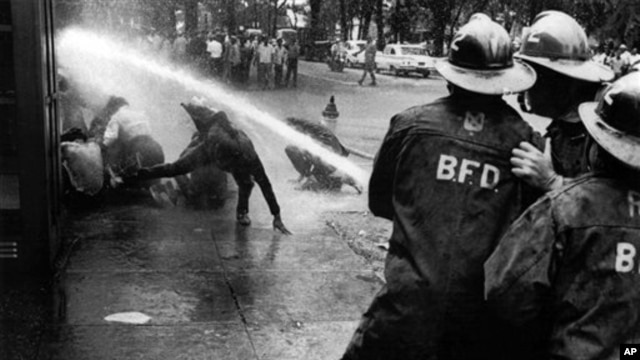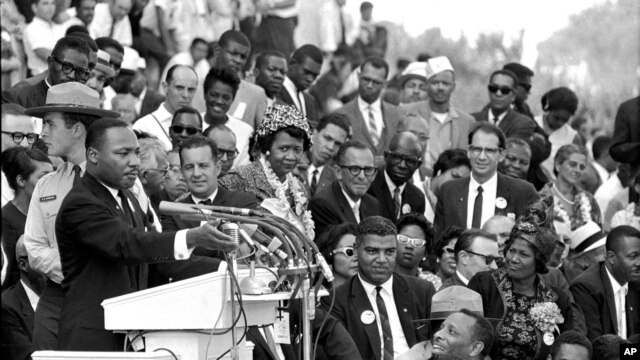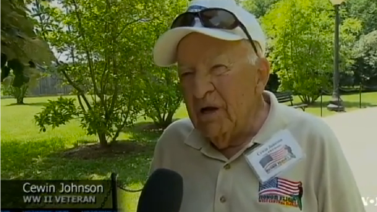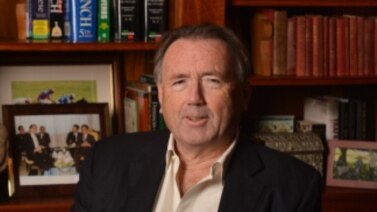
Welcome to “As It Is” from VOA Learning English! I’m Mario Ritter.
Today we remember an important moment in the history of the American civil rights movement. The March on Washington took place exactly 50 years ago on this date.
Civil rights activists and thousands of other people filled the National Mall in Washington. The high point of that day was a speech given by civil rights leader Martin Luther King Jr. It became known as the “I Have a Dream” speech.
“I still have a dream. It is a dream deeply rooted in the American dream.”
That message has become part of the nation’s history. Today, we hear about the 50 anniversary observance last Saturday. Civil rights leaders remembered the struggles of the past and asked questions about the future. Then we look back at the message of non-violence that helped the civil rights movement succeed in changing America.
Washington Marks the 50th Anniversary of the "Dream" Speech
Tens of thousands of people gathered on America’s National Mall last Saturday to mark the 50 anniversary of the March on Washington.
VOA’s Pam Dockins watched the event last weekend. She says its speakers expressed support for a number of social issues. Kelly Jean Kelly has her report.
"Yes, we will. Yes, we will. Yes, we will."
It was a chance for many people to relive the civil rights movement of the 1960s. Some speakers had experienced the movement themselves as young people. They spoke of the sacrifice needed to make big changes in society. Sometimes, these are changes in the law, such as the Civil Rights Act of 1964. That law barred discrimination in employment based on a person’s race or sex. Several pieces of major legislation came out of the civil rights movement of the 1960s.
Activities on Saturday took place near the Lincoln Memorial, where Martin Luther King gave his famous “I Have a Dream” speech 50 years ago. Speakers brought attention to many social causes including civil rights, women's rights, immigration reform and ending gun violence. The main reason for the gathering was to honor King and his sacrifice. A gunman shot and killed the civil rights leader on April 4, 1968.
But, the observance was also a place to ask questions about the direction of the civil rights movement today. The crowd listened to Myrlie Evers-Williams. She was married to Medgar Evers, another civil rights leader who was killed.
"As I look out at the crowd, I find myself saying, 'What are we doing today? Where have we come from? What has been accomplished? And, where do we go from this point forward?'"
Congressman Steny Hoyer is from Maryland and a leading member of the Democratic Party. He said the United States had moved forward on the subject of race. He pointed to the election of President Barack Obama as proof.
"The historic election of President Obama testifies to the progress we have made which would not have been possible except for the millions who sacrificed and raised their voices for change."
The 50th anniversary events included African Americans, Asian Americans, immigrants and young people.
Janet Murguia heads the National Council of La Raza, the nation's largest Hispanic civil rights group. She said Hispanics consider themselves a part of Martin Luther King's dream.
"Millions of Latinos were watching that day in 1963. When we heard Dr. King proclaim, 'I have a dream,' we knew he was talking to us too."
One of King’s sons, Martin Luther King, III, also spoke. He said his father’s dream has yet to be realized. He noted that unemployment and poverty remain high among African Americans.
"Today with 12 percent unemployment rates in the African American community and 38 percent of all children of color in this country living below the level of poverty, we know that the dream is far from being realized."
But he added that, if Americans do their part to support freedom at home, in school, on the job and in organizations, then change will come.
I’m Kelly Jean Kelly.
Civil Rights and Non-Violence
The American Civil Rights Movement was successful largely because of millions of African Americans who fought racial discrimination in the 1960s. Another reason for the success was the plan to avoid violence when protesting unfair treatment. Marsha James has more on this strategy in a report from VOA’s Chris Simkins.
Martin Luther King Junior was a top leader of the Civil Rights Movement. His non-violent policies were a product of the teachings of Indian independence leader Mohandas K. Gandhi.
Throughout the South, King brought attention to racial discrimination and unequal treatment. Under his leadership, millions of African Americans took part in peaceful protests, civil disobedience actions and economic boycotts.

The non-violent movement was tested in places like Birmingham, Alabama. As actions against non-violent protestors continued, so did the push for major civil rights laws. William Bell is the current mayor of Birmingham. He says that during the 1960s, members of the civil rights movement were afraid.
"During that period of time you had people who were being murdered, homes being bombed, churches being bombed and there was a sense that evil would prevail."
Television stations broadcast pictures of Birmingham police using dogs and fire hoses to break up protests by schoolchildren. Lawyer Richard Cohen works for the Southern Poverty Law Center, a civil rights organization. He says the images of the violence send a powerful message.
Some leaders describe the non-violent civil rights movement as America's second civil war. Ben Jealous is President of the nation's oldest civil rights organization. He says the non-violent campaign won American hearts and minds.
I’m Marsha James.

Fifty years ago, Martin Luther King Junior captured the imagination of the nation with his dream of a society based on equality and justice. Here are some of his words from that day.
“I have a dream that my four children will one day live in a nation where they will not be judged by the color of their skin but by the content of their character. I have a dream today.”
We hope you enjoyed our show. Listen again tomorrow for more reports about the United States and the world on As It Is.





